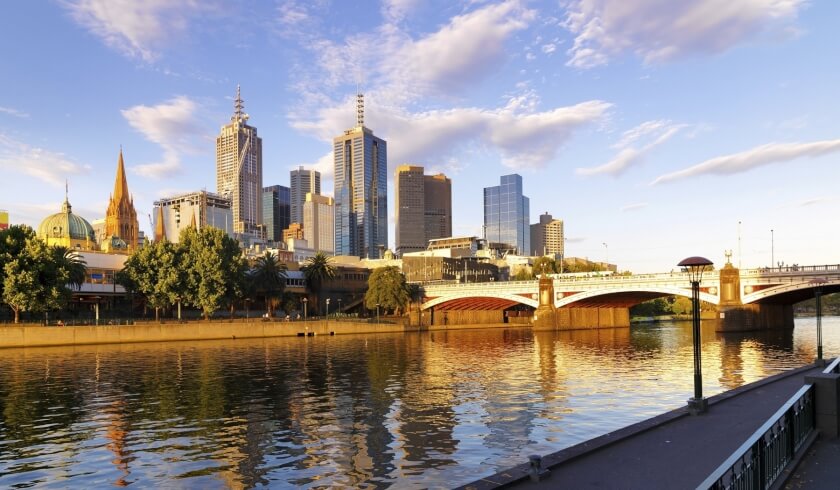Capital city property predictions for 2020 revealed
QBE Insurance has released a new report containing a forecast for the 2020 property market, detailing how the housing market is set to improve, while units won’t be doing as well with the majority of capital cities forecasted for falls.

Produced by BIS Oxford Economics, the results of the QBE Australian Housing Outlook 2017-2020 report show overall Australian houses are generally set for growth.
Looking from now to 2020, median housing prices are predicted to fall by 0.2 per cent and 0.9 per cent in Sydney and Darwin, while rising in the other capital cities, with Canberra predicted to rise by 16.3 per cent, Hobart by 10.8 per cent, Melbourne by 10.2 per cent, Brisbane by 7.1 per cent, Adelaide by 6.9 per cent, and Perth by 2.8 per cent.
Meanwhile, the capital city unit markets have been largely predicted to fall, with Brisbane predicted to fall by 7.2 per cent, Melbourne by 4.8 per cent, Sydney by 3.8 per cent, Darwin by 3.2 per cent and Perth by 0.6 per cent. The only rises have been predicted for Hobart by 8.6 per cent, Adelaide by 3.2 per cent and Canberra by 2.4 per cent.
QBE Lenders’ Mortgage Insurance CEO Phil White attributed the fall in unit prices as means of addressing housing affordability issues, with potential property owners choosing to opt for medium to high density apartments.
“Units contribute to a greater share of the market as changing lifestyles and affordability dictate property choices, Mr White said.
“Encouragingly, that dream should become a reality for more Australians, with improving affordability overall.”
The report also breaks down the predicted outlook for each capital city for the next three years to June 2020:
Sydney
Dwelling completions will ease at approximately 12,900, and with higher interest rates and lower LVRs, the report states these factors will limit the number of investors entering the market, while owner-occupier demand will ease.
Housing prices are predicted to decline by a cumulative 4 per cent to 2018-19, then return to a modest growth up to $1,150,000 by June 2020. This then will have a knock-on effect on the unit market, with a decline of 4 per cent to $760,000.
Melbourne
Like Sydney, Melbourne’s housing market is expected to outperform the unit market, with forecasts of a cumulative increase of 10 per cent $940,000 and a decline of 5 per cent to $535,000 respectively.
Brisbane
Unlike the previous two capital cities, Brisbane’s markets are expected to maintain their current trends, with a moderate rise in house prices of a cumulative 7 per cent to $590,000 and a moderate decline in unit prices of 7 per cent to $385,000. The decline here is predicted to be steeper than Sydney and Melbourne’s due to a larger unit oversupply.
Perth
Perth has very little change predicted for the next three years due to subdued economic conditions and a rising excess of dwellings, with median house prices having a cumulative rise of 3 per cent to $535,000 and median units having a decline of less than 1 per cent to $400,000.
Adelaide
Adelaide is predicted to see marginal increases as South Australia’s economy weakens and population growth slows down. For median house prices, 2 per cent per annum is expected for 2017-18, then expected to pick up to 7 per cent by June 2020 to $510,000, while median unit prices have been forecast to rise by a cumulative 3 per cent overall to $372,000.
Hobart
Hobart is another capital city set for more growth on the house and unit markets, with an undersupply and tight rental market pacing an upward pressure on prices, resulting in a cumulative rise of 11 per cent to $470,000.
Canberra
The housing market is predicted to thrive more so than any other capital city, with a rise in the median price of a cumulative 16 per cent to $750,000 due to an increase of public sector employment growth, population growth and a general undersupply, while the unit market will see a much smaller rise of a cumulative 2 per cent to $435,000.
Darwin
Declines are expected for median house and unit prices as a result of the decline in resource investment and elevated unit construction respectively. The median house price is expected to not see a cumulative percentage change, but will see a rise of 1 per cent per annum in June 2020 to $540,000, and see a decline of a cumulative 3 per cent to $455,000.
